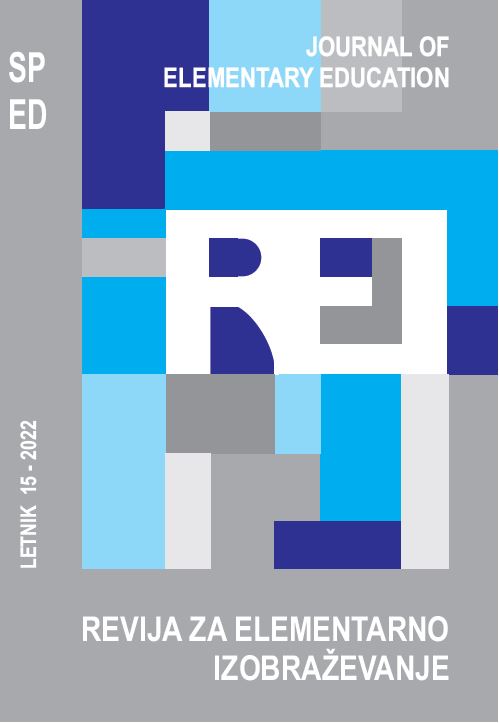Museum and School Interpretation of Cultural Heritage
DOI:
https://doi.org/10.18690/rei.15.Spec.Iss.7-26.2022Keywords:
museum, school, heritage interpretation, scientific informationAbstract
The museum and the school are two complementary institutions within the system of cultural heritage care. The Knight’s Hall in Brežice Castle is used here as an example for qualitative research on cultural heritage interpretation. The research focused on scientific art-historical information as the basis for cultural messaging. The analysis of the museum interpretation included a printed Knight’s Hall guidebook, as well as hall-related information boards and digital information, while the analysis of the school interpretation included an art history exam catalogue and an art history textbook. The research revealed a minor difference in the interpretation of the Baroque wall paintings, specifically with regard to the ceiling of the hall. At the museum, the ceiling is interpreted as a part of the wall painting, not, however, as its highlight.
Downloads
References
Bračun Sova, Kemperl, M. (2016). Museum interpretation as a didactic concept: case study of the Strossmayer Gallery of Old Masters. Croatian Journal od Education, 18(4), str. 969–997.
Černelič Krošelj, A., Dejak, V., Lorber, O., Počkar, I., Puhar, J., Kolar, B. (2017). Štirje elementi: 1 – voda. Brežice: Posavski muzej.
Denzin, N. K., Lincoln, Y. S. (2011). Introduction: Disciplining the Practice of Qualitative Research. V: N. K. Denzin, Y. S. Lincoln (ur.), The Sage Handbook of Qualitative Research (četrta izdaja, str. 1–19). London, Thousand Oaks, New Delhi, Singapore: Sage Publications.
Desvalées, A., Mairesse, F. (2010). Key Concepts of Museology. Pariz: ICOM, Armand Colin.
Dewey, J. (2012). Šola in družba. Ljubljana: Pedagoška fakulteta.
Germ, T. (2001). Uvod v ikonografijo. Ljubljana: Filozofska fakulteta Univerze v Ljubljani.
Kemperl, M., Vidmar, L. (2014). Barok na Slovenskem: sakralni prostori. Ljubljana: Cankarjeva založba.
Maroević, I. (2020). Uvod v muzeologijo. Ljubljana: Slovensko muzejsko društvo.
Miles, M. B., Huberman, A. M. (1994). Qualitative Data Analysis: An Expanded Sourcebook. Thousand Oaks, London, New Delhi: Sage.
Novak, B. A., Tavčar, L. (1997). Zarja časa. Mit v sliki in besedi. Ljubljana: Narodna galerija.
Palazzo Barberini, Arte, Capolavori (2022). Pridobljeno s https://www.barberinicorsini.o–rg/opera/il-trionfo-della-divina-provvidenza-e-il-compiersi-dei-suoi-fini-sotto-il-pontificato-di-urbano-viii/ (Dostopno 3. 5. 2022.)
Papuga, D. W. (2011). Philosophies of Interpretation. V: Ž. Jelavić (z R. Brezinšek in M. Škarić) (ur.), Old Questions, New Answers: Quality Criteria for Museum Education: Proceedings of the ICOM CECA’ Conference, Zagreb, September 16–21, 2011 (str. 98–103). Zagreb: ICOM Croatia.
Perko, V. (2020). Terminološki slovar. V: Maroević, I., Uvod v muzeologijo. Ljubljana: Slovensko muzejsko društvo, str. 362–371.
Perko, V. (2022). Neskončno bogastvo zbirke Rudolfa II.: med muzeji, znanjem in sodobno znanostjo. V: Hellmuth Kramberger, A., Perko, V. (ur.). Za človeka gre: digitalna transformacija v znanosti, izobraževanju in umetnosti. Maribor: AMEU – ECM, Alma Mater Press, str. 176–194. Pridobljeno s http://press.almamater.si/index.php/amp (Dostopno 17. 3. 2022.)
Republika Slovenija, Ministrstvo za kulturo, Interaktivna karta registra kulturne dediščine. Pridobljeno s https://www.gov.si/teme/register-kulturne-dediscine/ (Dostopno 15. 8. 2012.)
Robson, C. (2002). Real World Research: A Resource for Social Scientists and Practitioner-Researchers. Oxford: Blackwell Publishers.
Rutar Ilc, Z. (2019). Medpredmetne in kurikularne povezave v kontekstu učnociljnega in procesnega načrtovanja in izvajanja pouka. V: Pavlič Škerjanc, K., Rutar Ilc, Z. (ur.), Medpredmetne in kurikularne povezave. Ljubljana: Zavod RS za šolstvo, str. 71–113. Pridobljeno s https:–//www.zrss.si/pdf/medpredmetne-kurikularne-poveza–ve.pdf (Dostopno 12. 4. 2022.)
Tavčar, L. (2009). Homo spectator: uvod v muzejsko pedagogiko. Ljubljana: Pedagoški inštitut. Pridobljeno s https://www.pei.si/ISBN/978-961-270-007-2.pdf (Dostopno 12. 4. 2022)
Vogrinc, J. (2008 a). Kvalitativno raziskovanje na pedagoškem področju. Ljubljana: Pedagoška fakulteta.
Whitehead C. (2012). Interpreting Art in Museums and Galleries. London, New York: Routledge.
Whitehead, C. (2009 a). Museums and the Construction of Disciplines: Art and Archaeology in Nineteenth-Century Britain. London: Duckworth.
Whitehead, C. (2016). How to analyze museum display: script, text, narrative. Pridobljeno s https://di–gitalcultures.ncl.ac.uk/cohere/wordpress/wp-content/uploads/2016/–10/WP1-CAT-1.2.pdf (Dostopno 12. 4. 2022)
Downloads
Published
Issue
Section
License
Copyright (c) 2022 Rajka Bračun Sova

This work is licensed under a Creative Commons Attribution 4.0 International License.
